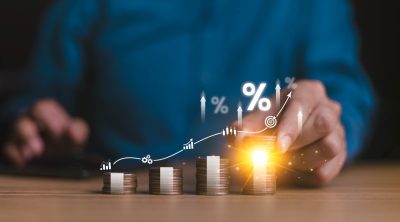Highlights
- In line with Juniper’s “Experience-First Networking” strategy, the recent series of announcements expands on existing capabilities.
- Network administrators can communicate with the network using conversational AI thanks to Mist’s virtual network assistant, Marvis.
Juniper Networks unveiled a number of new features and products that promise to improve its Artificial Intelligence (AI)-driven networking capabilities. The business expanded the use of its Mist technology to cover wired networks, data centers, and most recently, SD-WAN.
Juniper had invested a sum of USD 400 million to acquire Mist Systems in 2019, which now seems like a steal today given the fact that it has become the foundation of the company’s AI strategy. Mist was arguably the greatest AI engine for WiFi at the time of acquisition. The company began with wireless LAN, which can be the most challenging aspect of networking to troubleshoot because it can be difficult to identify the root cause. Research has found that some engineers devote up to 25% of their time fixing WiFi problems.
The recent series of announcements expands on existing capabilities and is in line with Juniper’s “Experience-First Networking “strategy, which states that the network must be able to deliver best-in-class user and customer experiences. The following are the new capabilities:
Juniper Access Points (APs) are automatically positioned and oriented for improved wireless performance
A great WiFi experience depends on AP placement, which can be tricky to get properly. Typically, IT professionals conduct a site survey and utilize the results as the basis to position and orient decisions. Site surveys frequently overlook building components that can reduce performance. Additionally, it’s simple for a network engineer to misread the layout and install the APs in the incorrect spot.
Another consideration is that a building’s conditions can change over time. The site survey may be accurate at this time, but new furnishings, redesigned floors, or electronics may necessitate the placement of a new AP.
Now that APs have been installed, Juniper Mist automatically checks their location and orientation and flags those that need to be realigned. The function uses the Juniper Wired Assurance service, which automatically places Mist WiFi 6 or 6E APs on a map in the Juniper Mist dashboard using the company’s virtual Bluetooth Low Energy (vBLE) antenna arrays and machine learning-based algorithms.
The location, orientation, and distance between APs are calculated and shown to reduce — or even eliminate — deployment problems. With changes in the environment, the dashboard will suggest where the APs should be moved to.
Mean time to repair is reduced thanks to AIops actions and network insights
Thanks to Mist’s virtual network assistant, Marvis, network administrators can communicate with the network using conversational AI. Marvis has several “Actions,” which is another way of saying that it recognizes a circumstance that results in a network problem. Common yet disruptive network issues such as Dynamic Host Configuration Protocol (DHCP) failure scopes and wired authentication can be solved by adding new actions in the release. By lowering the mean time to resolution, these actions enhance user and customer experience.
Juniper is also developing a Marvis Windows client to complement the existing Android client. Mist has superior visibility into network issues that may affect performance and connectivity when installed on a Windows PC. Mist AI receives the data so that Marvis can offer more informed recommendations. An overlay sensor network is not required when a client is used.
Using a new Ethernet switch, increased scalability with reduced complexity
The EX family of switches now includes a new switch from Juniper. The EX4100 is optimized for great scalability and straightforward operations. The new switch simplifies the deployment of an EVPN-VXLAN fabric that covers the distribution and access layers. Additionally, it has several crucial security features like MACsec AES 256 and standards-based micro-segmentation using group-based regulations. This becomes crucial when an organization’s IoT device count rises.
In order to assure better user and network engineer experiences, the organization is integrating cloud ideas into the network. For instance, Mist AI uses automated workflows and zero-touch provisioning to speed up deployment timeframes. Additionally, it provides quick troubleshooting with proactive anomaly detection and full-stack event correlation, which may fix problems before they negatively affect users. According to research, users, not the IT department, open roughly 75 percent of trouble tickets, which constantly puts network engineers behind. With network data and AI analytics, Juniper hopes to buck this tendency.
As a business, Juniper has done a fantastic job of changing its focus from being a company that markets technology, speeds, and feeds to one that can explain the value of its products in terms of business. Businesses compete based on their ability to provide a positive user and customer experience, and Juniper’s usage of AI enables it to do just that. Business leaders, as well as IT professionals, must take note of this.





























































